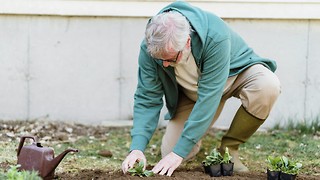The History of a Cantabrigian Student in Nine Objects: Part 4 – The Museum of Zoology’s Finback Whale
In the fourth instalment of this series retracing the history of a Cantabrigian Student, the director of the Rugeloût Institute, Prof. Autuneuille, presents to us the Finback Whale
4
The Museum of Zoology’s Finback Whale

Skeleton of a male Finback Whale, on loan from the University of Cambridge’s Museum of Zoology
AD 1865
The focus on Cambridge’s historical and cultural assets somewhat cause one to neglect the wealth of its flora and fauna. I wonder how many of you, dear readers, have lain down on the fens alone in the darkest night and ‘listen[ed] to the voices of the insects that chirp in the field… and tried to fix a value on the voice of each insect, high or low… Thus we whiled away the night [till finally] turning to face these dew-covered personages we politely bow down low.’ In this way the celebrated Japanese artist Kitagawa Utamaro took inspiration to paint his exquisite wood block printed book A Selection of Insects towards the end of the 1780s. So too did the greatest Japanese poets such as Matsuo Bashō (1644-94) express the profound and heartfelt connections between man and nature in the form of haikus. Here, Miura Chora (1729-80), who worked to bring the Ryoto School back to Bashō’s poetry and simplicity, with a candid brush-stroke makes crane and Bashō one:
in travelling attire
a crane in late autumn rain:
the old master Bashō
Miura Chora
The haiku evolved from the most prominent form of Japanese classical poetry, a poem of 5-7-5-7-7 syllables known as the tanka. Bashō often led poetry soirées where the assembled company would each write a verse in turn, linking back to the preceding poet’s creation. The leading 5-7-5 poem, known as the hokku, was often written in advance and set the tone for the emerging sequence. Bashō started to write hokkus that could stand alone as poems in their own right, that ‘beautified plain speech’, avoiding vulgarity, valuing simplicity and having a sympathy with solitude and frailty. In addition to following the 5-7-5 form, classical hokkus are meant to contain a kigo, ‘season word’ and a kireji, ‘cutting word’, which serves to divide the utterance into two parts, linking them with a subtle moment of tension or giving way to a final sense of wonderment. The form declined in the late 18th century until its revival a century later by Masaoka Shiki (1867-1902), who coined the term haiku and made the form more accessible with his characteristically steely humour:
I want to sleep
Swat the flies
Softly, please.
Masaoka Shiki
It is a little-known fact that Masaoka Shiki’s disciple Rei Giro (1895-1967) spent a year in Cambridge and in the rapture of its natural beauty composed a haiku cycle. Notably he composed a haiku contemplating the Museum of Zoology’s emblematic Finback Whale skeleton. The Finback Whale is the second largest living whale, and at seventy feet the Cambridge specimen is one of the largest recorded individuals of its species. The whale was washed ashore dead at Pevensey in Sussex in November 1865 and acquired by the university in 1866. For a hundred years it hung in the Old Museum, suspended over the skeletons of an African and Indian elephant; it was later re-displayed in the New Museum using the original 19th century metal framework designed by the university’s engineering department. It has re-entered storage as the third iteration of the Museum is built and should be back on display in June 2016.
The great Finback Whale,
It swims over elephants.
Lots of dry white bones.
The Spring’s grass is green
How is it so plush? Because
None can walk on it.
Midges in summer
Swirl around in clouds. No match
For my zap racket.
The autumn leaves fall
They slowly drift down the Cam;
Tourists’ punts collide.
Frost blankets the fens
I bask in dawn’s crisp silence;
A cow lows loudly.
Rei Giro
Read on next week, to see what fascinating object we’ll have in store for you in this brand new series of The History of a Cantabrigian Student in Nine Objects.
Missed a previous episode? Catch up here:
 News / Uni Scout and Guide Club affirms trans inclusion 12 December 2025
News / Uni Scout and Guide Club affirms trans inclusion 12 December 2025 News / Cambridge Vet School gets lifeline year to stay accredited28 November 2025
News / Cambridge Vet School gets lifeline year to stay accredited28 November 2025 News / Cambridge study finds students learn better with notes than AI13 December 2025
News / Cambridge study finds students learn better with notes than AI13 December 2025 Science / Did your ex trip on King’s Parade? The science behind the ‘ick’12 December 2025
Science / Did your ex trip on King’s Parade? The science behind the ‘ick’12 December 2025 News / Pembroke to convert listed office building into accom9 December 2025
News / Pembroke to convert listed office building into accom9 December 2025







